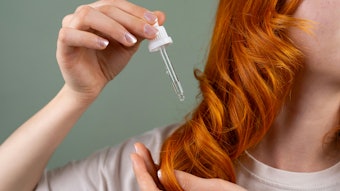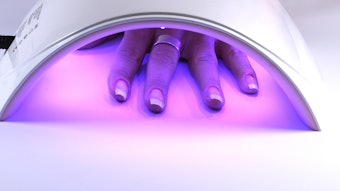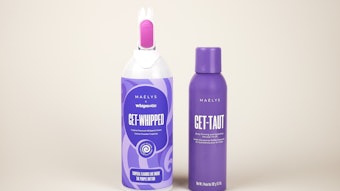
The past few weeks have found many of us sheltering in place with socially distant home office views of the unfolding COVID-19 crisis. Sadness over lives lost, fear as the numbers rise and confusion as to what to do next are ubiquitous. It’s from here, behind my dialed-in video chats, where colleagues and I have observed changes in personal care product needs. I find these interesting; perhaps you will, too. Following is what I’ve collected so far.
The scramble for hygiene
Natural extracts tend to exhibit antimicrobial and antibacterial properties, thanks to innate plant defenses. Importantly, they are not approved for these uses by most regulatory bodies. These ingredients have been leveraged for skin care activities, for fragrancing effects, as alternative preservatives and more.
But according to suppliers, demand for them has risen above their natural origin; natural products consumers are now Googling which of these extracts and oils have effective antiseptic and antibacterial benefits. This may also be due, in part, to a shortage of approved hand sanitizers—in fact, “hand sanitizer” searches peaked sharply the week of March 8-14, 2020, and gradually declined, while remaining well above normal volumea.
Praise for synthetics
With a heavy focus on hygiene and protecting loved ones, consumer acceptance for synthetic materials with proven efficacy is also expected to climb. This could mean ingredients once shamed from “clean” beauty labels will finally find their time to shine. The conversations I’ve had suggest a good explanation of the science, plus a proven safety record, may finally gain a foothold with consumers more strongly than their previously held misinformed beliefs. (So maybe, just maybe, they’ll hear you now.)
Ramping up supply
In late March, U.S. Food and Drug Administration (FDA) Commissioner Stephen M. Hahn, M.D., said, “We are aware of significant supply disruptions for alcohol-based hand sanitizers. Many manufacturers make hand sanitizers, and several have indicated that they are working to increase supply. In the meantime, these [newly released] guidances provide flexibility to help meet demand during this outbreak … ”
At the time, the FDA announced the release of two guidance documents to communicate its policy for the temporary manufacture of certain alcohol-based hand sanitizer products. These included:
- Temporary Policy for Preparation of Certain Alcohol-Based Hand Sanitizer Products During the Public Health Emergency (COVID-19); and
- Policy for Temporary Compounding of Certain Alcohol-Based Hand Sanitizer Products During the Public Health Emergency
The documents went into effect and will remain so for the duration of the public health emergency, as declared by the Secretary of Health and Human Services (HHS) on January 31, 2020.
Canadian and European authorities made similar adjustments to ensure a steady supply of hand sanitizers.
“There are two key formula types to consider,” says David Steinberg, cosmetics industry veteran, consultant, and formulating and regulatory expert. “You have the FDA Monograph-approved OTC ‘instant’ hand sanitizers, which are gels of foams like the Purell brand, and there are what’s referred to simply as ‘hand sanitizers’ by the CDC, FDA and WHO.”
He explains that the instant hand sanitizers, meaning the gels, are required to use denatured ethyl alcohol—with the INCI “alcohol” in the active ingredients listing and % v/v and denaturant listed in the inactive ingredients section—gelled with a neutralized carbomer. These products must be FDA-approved and can contain added fragrance and other ingredients.
Loosening the rules
However, as we all know, supplies have run short. Production of the main carbomer used was increased in the United States but is still taxed to keep up with demand. Other sources may have been shut down due to COVID-19-related stay-at-home orders. So, as an alternative, the U.S. FDA has approved the selling of “hand sanitizers,” which are thin liquids like water (and not as appealing to use).
Similar to their U.S. counterparts, Health Canada has released a plan to expedite the distribution of ethanol- and isopropanol-based hand sanitizer products to the public. The European Chemicals Agency has also issued guidance how European companies can bypass the normal authorization requirement for biocidal products in order to speed up the manufacture and supply of disinfectants.
“There are two forms of the liquid ‘hand sanitizer’ approved by the CDC,” says Steinberg. “One is based on 80% ethyl alcohol and the other, 75% isopropyl alcohol.”
He adds that these products contain alcohol, glycerin, hydrogen peroxide and water—at the amount published by the FDA—and may contain nothing else. As an aside, he notes the OTC Monograph lists ethyl alcohol at 60-95%, and isopropyl alcohol at 70-91.3%.
Unlawful formulations emerging
Unsurprisingly, these liquid hand sanitizers are less aesthetically pleasing. They offer rapid sanitization but the alcohol can be extremely drying to skin. In FDA-approved gels, on the other hand, formulators can add humectants to help counteract this effect.
“These liquid sanitizer formulas must exactly follow the FDA labeling but marketers like to add fragrance and other ingredients,” says Steinberg. One recent example was a product with added CBD. “That’s a drug and an illegal mixture, and is not allowed,” Steinberg says. Nonetheless, numerous such products have been marketed recently.
Regulators issue warnings
The FDA has taken note. The organization recently provided an update on efforts to ensure the availability of alcohol-based sanitizer to help meet demand during the COVID-19 pandemic.
Thanks to the agency’s easing of restrictions, more than 1,500 additional manufacturers have registered to produce hand sanitizer. However, there are serious safety concerns related to the products being sold that are not in line with the FDA’s policy, as noted by Steinberg, and others being marketed with unproven claims.
“We appreciate industry’s willingness to help supply alcohol-based hand sanitizer to the market to meet the increasing demand for these products, and are grateful for their efforts,” said Hahn. “With this increased supply comes our continued mission to ensure safety of these products. It is important that hand sanitizers be manufactured in a way that makes them unpalatable to people, especially young children, and that they are appropriately labeled to discourage accidental or intentional ingestion. Additionally, hand sanitizers are not proven to treat COVID-19, and like other products meant for external use, are not for ingestion, inhalation or intravenous use.”
Denaturing alcohol
Following the FDA’s guidance to increase the availability of alcohol-based hand sanitizers, the agency has received feedback and questions in recent weeks from industry and Congressional members, particularly regarding the need to use denatured alcohol for these products. Adding denaturants to alcohol renders the product more bitter and less appealing to ingest, particularly for young children.
For the full article, check out Global Cosmetic Industry's June digital magazine.
Footnotes:
ahttps://trends.google.com

!['Snoopy and Woodstock are cherished [characters] across generations and pairing them with our most-loved body care essentials creates a collection that feels classic with a modern twist. This launch is about celebrating our community with something unforgettable while starting an exciting new era for the brand,' said Luis Garcia, Chief Marketing Officer.](https://img.gcimagazine.com/mindful/allured/workspaces/default/uploads/2025/10/tree-hut-peanuts-fullcollection-fall26-1x1-1253.lGcuurUszp.jpg?auto=format%2Ccompress&fit=crop&h=191&q=70&w=340)









